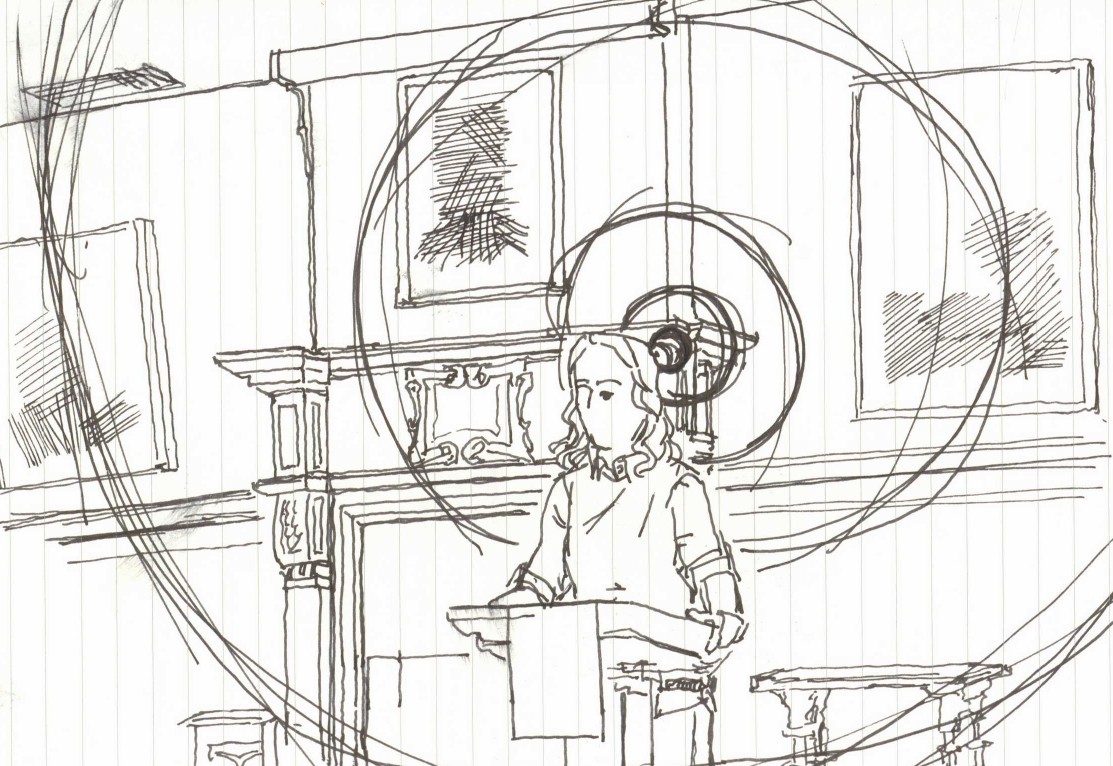Skipping meals and showers to become closer with God.
It is no secret that our lives as students at Columbia University are filled with distractions. Constant emails, push notifications, the ever-streaming Shorts, TikToks, advertisements, and the horns and sirens from the busy streets of the city—sometimes it feels impossible to concentrate on anything. Many of us may look back on simpler times or fantasize about a world without the constant bombardment of noise. However, according to historical records, even early Christian monks—people who dedicated their lives to solitude, in a much quieter time than ours—also struggled with distractions.
Last Friday, on October 17, the Institute for Religion, Culture and Public Life welcomed Professor Jamie Kreiner from the University of California, Los Angeles to share and discuss the research on medieval monks’ strategies against distractions at Casa Hispánica near Morningside Campus. A historian of the early Middle Ages, Kreiner drew on a trove of monastic writings from the 4th to 9th century, and spoke about the monks’ fight for concentration.
“The monks saw themselves as morally obligated to fight distractions,” Kreiner said. People usually think of monks as exemplars of concentrating, masters of singlemindedness. According to Kreiner, that is certainly the goal—early Christian monks believed distractions could fracture their union with God. The monks wrote much about the distractions they faced, and Kreiner categorized these distractions into layers of inward circles.
In the outermost layer, Kreiner put “the world.” Distractions in this layer consist of a broad variety of things these monks may have been concerned about outside of their monastic lives. This could be family, friends, or even responsibilities. According to Kreiner, one medicine student ran away from school during a field trip, escaping into the confines of monastic life, thus becoming a monk. Indeed, some monks chose to enter monasteries as a strategy against distractions of the outside world.
The next layer, Kreiner said, is “community.” In theory, monastic communities are built to have monks support each other in their piety. In reality, monks found it difficult not to distract one another. In order to keep away the distractions among the monks, leaders of monasteries sometimes came up with a list of “don’ts,” while some other monks checked in with their mentors regularly to keep themselves on track.
Then, Kreiner pointed out how “body” serves as another layer of distractions. According to Kreiner, monks wrote about the frustrations towards their own bodily needs: hunger, hygiene, and sexual desires—some monastic orders even saw sleeping as a distraction from God. Some monks wrote about the distracting desires for snacks, and some engaged in fasting. As for bathing, it could be seen as short-term pleasure seeking, therefore a distraction as well. In order to combat the need for sleep, some chose to intentionally sleep in uncomfortable chairs.
Even deeper into the layers, Kreiner presented “technology.” In the modern world, books are often contrasted with smartphones in silly comics and memes as the less distracting counterpart. However, books were the distracting technology for early Christian monks. According to Kreiner, one writing suggested that books “damage the eyes and distort the brain,” which is amusingly similar to our criticisms towards smartphones. The value of books was, of course, not overlooked. Therefore, it was advised to take reading moderately.
Very close to the core of the circles, we have “memory.” The potential for distraction in memories is self-explanatory. According to Kreiner, however, monks came up with ways to take advantage of the mechanism of memories instead. Some engaged in a sort of “meditation” activity where they visualized and actively linked memories together in order to organize and preserve them. By practicing these activities, the best of the monks could overcome this layer, entering to the core.
At the core, Kreiner suggested, lied “metacognitive”—the thinking of thoughts. Some monks came up with unique strategies in order to overcome the distraction of thinking itself, one of these strategies being the practice of “discernment.” To practice discernment, monks came to be in the habit of questioning the origin of every thought of their own, and discarded them when they were not helpful to their pious purposes. Kreiner shared that some writings recorded experiences of monks who were able to briefly enter a state of simply “being”—without the distraction of even their own thoughts—a state which can only be described by the absence of other things. It is such an enjoyable experience, that coming out of this state, some monks wrote, is comparable to being widowed.
So the monastic records Kreiner shared with the audience seem to suggest that even those who were thought to be the most concentrated still struggled with distractions—much like we all do. Can we learn from the strategies devised by the early Christian monks? How might these practices from the past assist in our tasks in the present? Or, do we really need to worry about distractions as much as the monks did?
However important schoolwork might be, we at Bwog strongly suggest that you never skip meals, always get a good night’s sleep—and, of course, please take showers.

“What was Pious Attention?” was the first event of the Devotion and Distraction Series by the Institute for Religion, Culture, and Public Life. To learn more, visit ircpl.columbia.edu
Illustration via Bwog Staff


 0 Comments
0 Comments